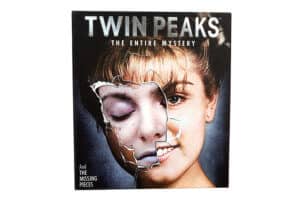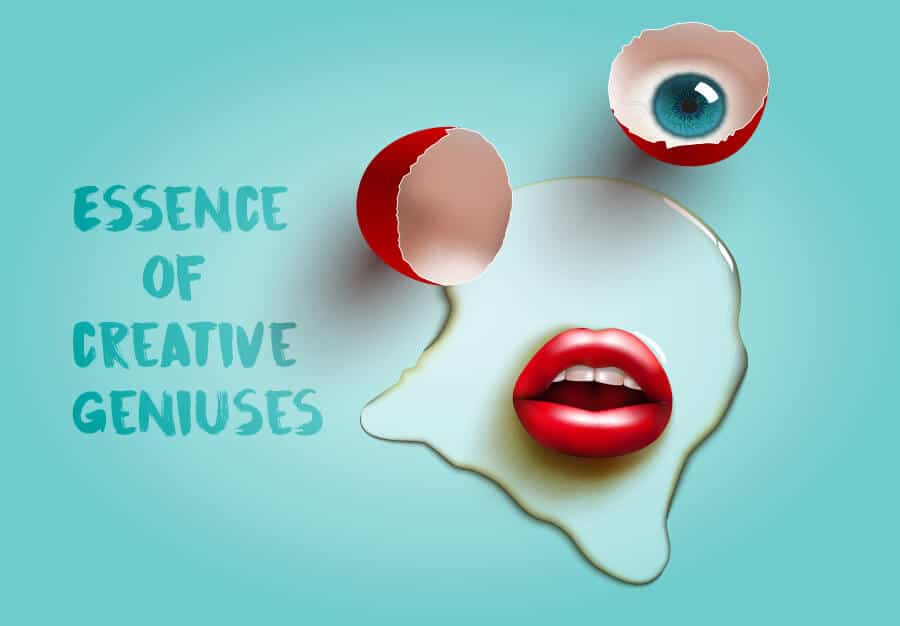Creative Geniuses Seem to Be Driven by Their Own Madness and Their Inner Demons. Why Is It Important for Artists to Take Care of the Child Inside Them? Is the Joy of Creativity Worth Being Considered Crazy?

In one of his interviews, David Lynch – the revolutionary abstract cinema genius – confessed that he had given up on therapy when he had heard that it could affect his creativity. Had David Lynch taken serious care of his mental health, maybe he would never have directed Twin Peaks, or even Eraserhead. Why is it that the greatest artists – directors, painters, writers, philosophers – are also considered the craziest of us?
Driven by Madness
The link between madness and creativity has been at the front of scientists’ minds for a long time. Studies show that the correlation between psychopathology and originality is significant. Moreover, people who suffer from mental disorders and creative people often share personality traits.

Humanity follows structures. We like it when the plot is logical and the motivation behind the characters holds water. In 1977, when David Lynch debut Eraserhead was released, people would come out of the movie theatre confused, shocked, filled with strong emotions. It took genius – and courage – to do something nobody has ever done before.
30 years later, during the Venice Film Festival, David Lynch was called ‘the most important film-maker of the current era.’
Creativity has always been a “high risk – high gain” game. In society, only a small proportion of creative people achieve success, get to sell their works, and have their place on the cards of history. But when they do, they succeed spectacularly – and that’s what keeps many creative individuals going.
Despite his great artistic success, David Lynch said that “[he] had [his] reasons to go to therapy.” Some sources report hallucinatory experiences and feelings of schizophrenia in his early life. Lynch refused to give up on his inner demons for the sake of creativity. It seems that the genius filmmaker was driven by his madness – and he wasn’t the only one.
Against all the odds, creativity can be a curse. How are ideas created in the human mind? Why are so many artists misunderstood by their contemporaries and what is the nature of creative madness?
How Ideas are Made

Every song, painting, a poem, or a book starts with an idea. This shapeless, imaginary spark appears in the human consciousness as if it was derived from some deeper layers of the unconscious. An artist’s job is to manifest that formless idea into a real, tangible object, story, or sound in the physical reality.
These ideas are often derived from the depths of the self. Engaged in the creative process, artists can completely lose touch with ‘the real world’ and become but tools for their ideas. More often than, they can’t understand these ideas themselves. As Mozart once said:
“Whence and how they come I know not; nor can I force them.”

If you look at the creative geniuses of history, a significant percentage of them had some kind of mental disunity. Whether they found functioning in a society troublesome or struggled with depression, these disturbances pushed them to lose themselves in the creative work. The crazy geniuses could embrace chaos, anxiety, and insecurity.
The creative process was often divided into intervals: periods of intensive self-absorption in creative work and times of rest and inertia. This constant jumping from one extreme to another was a motor for new ideas. Some composers and poets said that it was in the periods of taking a break when new ideas occurred in their heads.
This phenomenon – frequent shifting between extremes – is what would make geniuses difficult to understand. People close to David Lynch would say that he was a completely different person when hanging out with his friends in comparison to when he was absorbed in the creative process. The lack of balance, this abnormality, would often turn artists into social outcasts.
Daydreams and the Adult Children
Playfulness is often associated with childhood: the feeling of carefreeness and losing touch with ‘the real world.’ Daydreaming is another phenomenon seen as childish, not serious.
A study on kindergarten children concludes the connection between creativity and intelligence, especially verbal IQ. Originality can also be associated with the general dimension of “playfulness,” connected to openness and bringing about the reminiscences of childhood.

Leonardo DaVinci – one of the greatest creative geniuses of human history – was never understood by his contemporaries and peers. As a matter of fact, we still can’t quite grasp Leonardo’s mind till this day.
With adulthood, there comes self-doubt, insecurity, and the need to make money – we can call it the resistance. All of these rational things that keep us from hopelessly devoting ourselves to the creative process. Only by overcoming this resistance and taking good care of the child inside us will allow us to keep generating new and useful ideas.
Unfortunately, it’s not that easy to stay a playful daydreamer. Contemporarily, in late capitalism, it’s unimaginably difficult to monetize creativity. Manifesting the idea through a book or a painting is a small part of it. To actually make money from it, you need to dive deeper into the spheres of marketing, maybe get an agent, establish an organization, tell people what the idea is and how it’s different from all the other ideas out there.
It’s difficult for ideas to make money. Investors and customers want to see proof of the usefulness and security of your ideas. Because of that, many artists are having a hard time making ends meet. Again, we see extremes. If they don’t achieve enormous success, they experience poverty and lack of financial stability. This is yet another factor that contributes to their misery, strengthens their oddity, and puts them beside the rest of society.
As compensation, they can use those hurdles to generate even more original ideas. Nonetheless, it’s a trade-off.
The Mad Genius of Creativity
Despite these terrible risks – the lack of touch with the rest of society, the cultivation of the inner child, the winner-takes-it-all nature of creative work, and the lack of control over one’s own ideas – the joy of creativity is absolutely worth it.
As some claim, creativity is not about talent, it’s about absorption. The ability to completely lose yourself for the sake of manifesting the ideas coming from an unknown, unconscious realm.
Schizophrenia and bipolar disorder are the most common psychopathologies among creative geniuses of the past, as well as the present. People who suffer from bipolar disorder experience shifts between manic and depression phases. One moment they feel like a god on the top of the world, the other they drown in self-doubt and despair.

Isaac Newton, Wolfgang Amadeus Mozart, Vincent van Gogh – these respected and acknowledged artists, among many others, depicted symptoms of bipolar disorder. A more modern example, rapper Kanye West, has also shown his craziness on more than one occasion.
The inner demons can be the motor for creative ideas. Kanye West called bipolar disorder “his superpower.” In the words of the great philosopher Friedrich Nietzsche:
“You must have chaos within you to give birth to a dancing star.”
Creativity is a curse you can’t run away from. You might suppress it, but it will only turn out badly for you. Creative people in non-creative jobs are simply miserable, devoid of the joy that creative work brings.
As you see, the link between madness and creativity is the more evident the more you think about it. Yet, each one of those creative geniuses in human history seemed to be on good terms with their craziness. What is more, just like the abstract film director David Lynch, they refuse to face their demons – they embrace them.
It seems that all the deviations from what we understand as “normal” or “healthy” are a fair price for the joy that creative work brings. What if we could all learn something from the mad geniuses: life advice, a truism? Paraphrasing Colin Kaepernick, we shouldn’t ask if our dreams are crazy; we should ask if they’re crazy enough.
Photos: Shutterstock / Edited by: Martina Advaney
More articles on creativity:
Between Creativity And Entrepreneurship: Ewelina Wozniak And Her “Red Button” Factory
How To Activate Creativity In The Brain? Tricks From A Professor Of Biology
Support us!
All your donations will be used to pay the magazine’s journalists and to support the ongoing costs of maintaining the site.
Share this post
Interested in co-operating with us?
We are open to co-operation from writers and businesses alike. You can reach us on our email at cooperations@youthtimemag.com/magazine@youthtimemag.com and we will get back to you as quick as we can.









